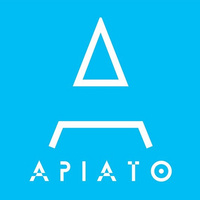Exceptions Formatters 本文未发布 发布文章
Definition & Principles
In Apiato you can format any Exception response the way you want, using the Exception Formatters (same like Transformers but for Exception Responses).
Apiato uses the Heimdal package, which allows you to format your API exceptions responses using Formatter classes. For more details visit the package documentation.
By default Apiato have basic ExceptionFormatters for outputting Exceptions in a good format.
These Formatters can by modified, example: in case using the JSON API payloads, you may change the provided formatters to return JSON API Error response .
Rules
- All Formatters MUST extend from
Apiato\Core\Exceptions\Formatters\ExceptionsFormatter.
Folder Structure
- app
- Ship
- Exceptions
- Formatters
- HttpExceptionFormatter.php
- ExceptionFormatter.php
- ...Code Samples
<?php
namespace App\Ship\Exceptions\Formatters;
use Apiato\Core\Exceptions\Formatters\ExceptionsFormatter as CoreExceptionsFormatter;
use Exception;
use Illuminate\Http\JsonResponse;
class AuthorizationExceptionFormatter extends CoreExceptionsFormatter
{
CONST STATUS_CODE = 403;
public function responseData(Exception $exception, JsonResponse $response)
{
return [
'code' => $exception->getCode(),
'message' => $exception->getMessage(),
'errors' => 'You have no access to this resource!',
'status_code' => self::STATUS_CODE,
];
}
function modifyResponse(Exception $exception, JsonResponse $response)
{
return $response;
}
public function statusCode()
{
return self::STATUS_CODE;
}
}- The
responseDatais where you format the response. - The
STATUS_CODEis the status code which will be sent in header. (status_codecould be the same as the header code). -
The
modifyResponseallows you to alter the response when needed. Example:<?php public function modifyResponse(Exception $exception, JsonResponse $response) { // append exception headers to the response headers. if (count($headers = $exception->getHeaders())) { $response->headers->add($headers); } return $response; }
Create your own Formatter
You can add your own formatters (or override existing ones) anytime.
All Formatters live in App/Ship/Exceptions/Formatters.
By default Apiato provides formatters to format basic Exceptions (or HTTP Exceptions) as well as “common” Exceptions like AuthenticationException and so on.
Registering Your Formatters
In order to inform Apiato to use your new AwesomeExceptionFormatter you need to register it. This can be done in the App/Ship/Configs/optimus.heimdal.php configuration file.
Take a look at the optimus.heimdal.formatters key. This array defines a key-value list that declares a Mapping between an Exception class and the corresponding Formatter.
Say, you want to register the AwesomeExceptionFormatter for all HttpExceptions add a new line to the top of this array, like so:
'formatters' => [
SymfonyException\HttpException::class => \Your\Custom\Namespace\AwesomeExceptionFormatter::class,
// the already defined exception formatters from Apiato
// ...
]Note: the order of the formatters matter.
When throwing anExceptionwiththrow new XException()the newAwesomeExceptionFormatteris used to format theExceptionrespectively.

 Apiato - 完美的 Laravel API 框架
Apiato - 完美的 Laravel API 框架



 关于 LearnKu
关于 LearnKu




推荐文章: